Derain is a bright and original plant from the Dogwood family, capable of decorating any garden plot in spring, summer, autumn and winter.Its unpretentiousness, high decorative qualities, easy care and planting, resistance to urban conditions, frost and heat have gained enormous popularity and respect among ordinary gardeners, summer residents and landscape design professionals.
|
This is what white derain looks like |
| Content:
|
Description of the bush
Decorative foliage crop has a branched root system, which can be located close to the surface of the earth or at great depths - it all depends on the type and variety. The spreading crown of an adult bush and its height usually approach the mark of two and a half to three meters.
|
The shoots of the dera are straight, very strong and elastic, painted at different times of the year in different shades of color - brown, red, pink, burgundy, yellow, green. |
The leaves are large, single-colored or two-colored, they may have a border of a different color, stripes of different sizes and spots of a different shade on the surface of the leaf plate.
|
The plant blooms in the middle or late spring with white or pinkish small flowers with a sweetish aroma. |
After the end of flowering, edible bright red oblong fruits up to three and a half centimeters long, with a tart, sweet and sour taste, are formed on the bushes. Each drupe berry contains one or two seeds.
Although derain can grow in almost any conditions, it will show its best decorative qualities if you follow simple rules for planting and caring for this amazing shrub.
Derain varieties with photos and brief descriptions
Derain has about five dozen species and varieties, a large number of varieties and plant forms. Among them there are evergreen and deciduous, small ground cover bushes, medium-sized shrubs and trees, tall and dwarf representatives.
A distinctive feature of each plant is the unique color of its shoots and leaves, which changes with the advent of each new season. White, light and dark green shades become lemon-yellow, purple-violet, red, pink, lilac, orange, brown.
Among the many species in ornamental gardening, the most common are “White”, “Canadian”, “Blood-Red” and “Sprout” and their numerous varieties. You can highlight the most popular examples.
Aurea
|
“Aureya” is a variety of White tree, presented in the form of a compact bush with a spherical crown and an average height of one and a half to two meters. |
Used as a hedge, for landscaping city parks and garden areas. It is distinguished by large lemon-colored leaf blades and red shoots in the summer months, red-yellow leaves in the fall. In open sunny areas, bright golden shades appear in full force.
Cardinal
|
“Cardinal” - belongs to the Otrysovy village. The variety has many flexible root shoots, which, when in contact with moist soil, quickly take root, which allows you to hold back the soil and strengthen the slopes. |
Can grow in partial shade, in places with close groundwater. With regular pruning, the color of the shoots and leaves becomes brighter.The variety is distinguished by the changing shade of leaves (from green to yellow and red) and bark on the branches (from olive to burgundy and red).
Cream Cracker
|
"Cream Cracker" - a beautiful shrub with bright pink bark on young shoots belongs to the White species. |
The average height is from eighty centimeters to two and a half meters, the crown diameter is from one to two meters. It is not afraid of pests and diseases, but cannot tolerate excess moisture in the soil.
Compress
|
“Kompressa” - a variety of Blood-red dera, is distinguished by winter hardiness and shade tolerance, unpretentiousness, and the ability to grow on almost any soil. |
A one and a half meter compact bush with a vertical crown attracts attention with reddish-brown shoots and burgundy-purple leaves in autumn. The peculiarity of the variety is the absence of flowering and fruiting.
Sibirika Variegata
|
“Sibirika Variegata” is a White variety with high resistance to all diseases. |
The shrub is about two meters high and has large green leaf plates with numerous white spots, stripes and washouts on the surface, as well as very beautiful bright red shoots. It blooms with small fragrant flowers with a greenish tint, the fruits are blue-blue with a grayish coating.
White Gold
|
"White Gold" - a fast-growing variety of Otrysovogo tree is a dense lush shrub about two and a half meters in height and the same in width. |
Every year the size of the plant increases by twenty centimeters. The leaves are large, up to eight centimeters in length, with a white edging along the edge. Long flexible shoots are covered with yellow-green bark.
Ivory Halo
|
“Ivory Halo” is a compact shrub plant belonging to the White derain. |
The average height is from one hundred twenty centimeters to one and a half meters. In winter, the crop attracts the eye with cherry-colored shoots, in summer - with light green leaves with many strokes and a white edging, in autumn - with rich red leaf blades. Every two years a rejuvenating haircut is required, which has a positive effect on decorativeness.
Green Light
|
“Green Light” - a variety of Blood-Red derain is presented in the form of a spreading shrub up to two meters high, recommended for planting and growing hedges. |
Ten-centimeter long, oblong, bright green leaves turn red and burgundy in autumn. The shoots are most attractive in winter when the bark is orange-green in color. The flowering period begins in June and lasts about two weeks.
Rules for planting and caring for derain
Site selection and soil preparation
The ideal planting location for derain is an open sunny area on the south side, but if this is not available, light partial shade can be used. If the landing site is on the north side, then it is worth building a protective structure from the wind in advance. The bush reacts negatively to its cold and sharp impulses.
Reference! The more sunlight a plant receives, the higher its decorative value. The minimum exposure of the tree to the sun is three or four hours a day.
The soil should be nutritious, breathable and light in structure, slightly alkaline or neutral in composition.In swampy areas, as well as when groundwater is very close, it is recommended to use drainage; in loamy areas, add compost and rotted humus or sand-peat mixture; in depleted areas, add wood ash, dolomite flour and superphosphate.
|
There should be no tall trees, especially conifers, near young crops. |
The interval between plantings depends on the purpose of cultivation and the variety of shrubs. In single plantings, the distance to the nearest tall plant crops is at least two meters. Hedges are planted at a distance of fifty centimeters to one meter. The depth and width of the landing pit is about sixty centimeters.
On a note! To ensure that the future hedge is level, string is pulled when marking the planting holes.
A drainage material made of a mixture of crushed stone and sand about fifteen centimeters thick is placed at the bottom of each hole, then a nutrient mixture is poured, which consists of two parts of turf soil and compost, one part of sand and peat, one hundred grams of superphosphate and dolomite flour. In areas with dry soil and deep groundwater, only coarse sand can be poured into the bottom of the hole.
Planting derain in spring
- Planting work is carried out in early spring before the start of sap flow.
- The age of seedlings should not exceed four years.
- You can use planting material with open and closed root systems.
- Before planting, seedlings with an open root system are immersed in a container of settled water for several hours so that the roots are saturated with moisture and can more easily withstand the transplantation procedure. Dead roots are cut off, healthy roots are shortened to twenty-five centimeters.
- The size of the planting pit for seedlings with a closed root system should be a quarter larger than the volume of the earthen ball on the roots.
- The hole is half filled with a nutritious soil mixture and watered abundantly with water.
- The seedling is placed in the center, small amounts of soil are covered, gradually compacting it and filling all the voids, after which it is generously watered again.
- After the irrigation water is absorbed, the surface around the bush is mulched with sawdust, peat, crushed bark or other organic matter.
Attention! The root collar is left flush with the soil surface.
Derain care
Watering and spraying
In the first year after planting, and especially during the rooting period of seedlings, the soil should not be allowed to dry out. It is recommended to water young plants on dry summer days at intervals of two to three days. Mature shrubs are watered less frequently, but more abundantly. Two to three times a month, each crop requires about two buckets of water. The ideal time for watering is before eight in the morning or after seven in the evening.
Important! Rare but abundant watering is much healthier for the tree, since thanks to it the root part is wetted evenly throughout its entire depth (about fifty centimeters). When watering superficially, the plants feel a lack of moisture, and the top of the bush begins to dry out.
During hot periods with a long absence of natural precipitation, spraying is used. They will increase air humidity, prevent yellowing of the leaves along the edges during severe drought, and clean the bush of dust. With the arrival of autumn, watering is suspended.
Application of fertilizers and fertilizers
Derain grows and develops well without fertilizers, but two or three additional feedings from spring to autumn will only improve its external characteristics, increase decorativeness and immunity, and make flowering and fruiting more intense.
|
In the spring, always before flowering, shrub crops are fed with mineral fertilizers with a high nitrogen content. |
You can use various mineral complexes - for example, Ecoplant, Rosla, Master, Diamofos. Nutrient solutions are applied at the root into moist soil in volumes according to the instructions.
In the summer, around August, it is recommended to feed the turf with organic matter. One bush requires from five to seven kilograms of compost or rotted humus. Fertilizer is applied to the tree trunk areas around the bush after watering.
Reference! Additional nutrition maintains the healthy appearance of the tree throughout the year, and also extends the flowering period and increases productivity.
Disease and pest control
Many pests love to feast on juicy greens, but derain leaves are not endowed with this quality and are not attractive to them. Although there are many other uninvited guests who feed on woody and green shoots, flowers, and young roots.
- May beetle larvae are destroyed by deep digging of the soil before planting seedlings and treating the area with insecticides. They are very dangerous for the root system.
- In dry and hot weather, spider mites may appear. Three sprays with an insecticide at intervals of seven to ten days will relieve the turf of this problem.
- Coleoptera insects (for example, the common bronze), which feed on petals and settle directly on flowers, can be defeated by spraying with ash infusion or special preparations such as “Diazinon”, “Medvetox-U”.
- The aphid invasion will be effectively destroyed by the drugs “Decis”, “Confidor”, “Aktellik”. The solution prepared on their basis is sprayed onto the entire plant two or three times at intervals of one week.
- You can get rid of scale insects and warty sawflies by spraying with tobacco solution, infusion of potato tops, or treating with Karbofos.
Possible diseases of the tree are spotting, powdery mildew, mold, bark cytospores, and gray rot. At the initial stage of the disease, it is recommended to treat the bushes with Bordeaux mixture or the drug “Hom”. In advanced cases, they resort to the help of drugs “Topaz”, “Skor”, “Vectra”.
Prevention measures
There are a number of preventive measures that will be a reliable obstacle to the emergence of pests and the development of diseases.
- When planting deer in low-lying areas with high humidity, as well as in swampy areas, it is necessary to use drainage materials.
- You should not plant shrubs in elevated areas that are blown by cold northern winds.
- It is recommended to periodically thin hedges to prevent the appearance of fungus and powdery mildew.
- All garden tools must be treated with disinfectant solutions before and after work.
- Regular loosening of the soil in tree trunk circles will not allow the larvae of many harmful insects to settle in it.
- For mulching, it is recommended to use dry peat, humus, and crushed bark.But you should not apply fallen leaves around the bushes; they can become a source of the spread of fungal diseases.
Preparing for winter
Derain is a winter-hardy plant that can tolerate very low winter temperatures. Mature shrubs can easily do without shelter, but young crops need to be insulated using agrofilm or burlap. In case of unexpected weather surprises, when a thaw begins after frosty periods, the shelter is removed for a short time to prevent damping off.
Tree trimming
Highly decorative shrubs require all types of pruning - sanitary, shaping, rejuvenating, decorative. The importance of this procedure lies not only in a competent approach and high-quality garden tools, but also in regularity and timeliness. There are certain rules and features of this procedure that must be followed.
|
With such heavy, annual pruning, you will have a small bush. |
Tree pruning is carried out in spring and autumn, but you need to take into account the climatic characteristics of your region. For example, it is better to postpone autumn pruning in northern latitudes with harsh winters until spring. After this procedure, it is more difficult for plants to cope with low temperatures and they are more vulnerable. In temperate and southern climates, it is worth ridding shrubs in the fall of old, diseased, defective, damaged, dried and growing branches. After dropping the leaves, it is much more convenient for the gardener to work; the entire “skeleton” of the bush is revealed, all the shortcomings and objects for removal are visible.
|
With this autumn pruning, next summer you will have a large spherical bush of derena. |
In spring, a light shaping haircut is performed or the existing shape is simply slightly adjusted.Carelessly growing young shoots are shortened and directed in the right direction. To give the culture neatness or create a certain shape, a decorative haircut is performed. In the summer, the procedure is repeated to consolidate the result. A radical anti-aging haircut is recommended for those plants that have stopped bearing fruit and have lost their decorative value. Old and diseased branches are cut off almost completely, which promotes the active appearance of young shoots.
Basic rules and features:
- You cannot trim bushes in rainy weather or during hot midday hours; it is better to choose early morning or evening for this;
- The first pruning for a tree planted in autumn is carried out next spring; to stimulate shoot growth, approximately a third of the plant is removed;
- after spring planting of seedlings, pruning is not required during the year;
- crown formation begins when the height of the bush reaches seventy centimeters; if necessary, the tops are pinched to obtain many side shoots;
- in the variegated tree, which is attractive for its bright young shoots, it is recommended to regularly remove one quarter of their length to obtain active growth of new branches;
- decorative haircuts can be carried out twice a year - in May - June and in August - September;
- each species and variety has its own individual characteristics of pruning;
- To obtain a positive result after the procedure, it is necessary to use only sharp and disinfected garden tools for work, after which an even and smooth cut will remain on the plants.
Features of autumn planting
Autumn is a favorable time for planting seedlings with a closed root system and for transplanting adult bushes. During this period, plants are less susceptible to stress; during the winter they have time to take root well and adapt to new conditions. In spring, stronger and hardened crops develop and grow much faster than others.
|
The technology for autumn planting is no different from spring planting. |
When redeveloping a site, unsuitable soil composition, inharmonious proximity of plants, and for many other reasons, sometimes it is necessary to replant an older bush. It is best to do this also in early autumn. The plant, along with a lump of earth, is carefully transported or transferred to a new place in a previously prepared hole. After planting, it is necessary to build a strong support for powerful branches and leave it until the bush is completely rooted.
Reproduction of derain
Derain is easily propagated in various ways, but layering and cuttings are used most often, since these methods are the most effective and affordable.
Cuttings
Lignified cuttings with two internodes are cut after flowering, the lower leaves are cut off completely, and the upper ones - in half. After this, the cuttings are placed in a container with water (or with the addition of a root growth stimulator) until the lower buds are completely submerged and left for one to two weeks for roots to form. Seedlings with roots about one centimeter long are transplanted into a cold greenhouse. Plants are transferred to open ground in early spring.
By layering
In early spring or at the end of the summer season, the thin and flexible shoot closest to the ground is tilted, a small incision is made on it and fixed in a previously prepared trench using a wire clamp.The layering is sprinkled with a soil mixture of compost and turf soil, the top is left above the surface, and watered abundantly. Rooting occurs over several months. After a year, an independent plant is obtained, ready to be transplanted to a permanent place.
The use of derain in landscape design
The variety of types and varieties of wood allows you to transform and decorate various areas, zone and fence individual areas, and create plant compositions. For landscape designers and ordinary nature lovers, this crop is universal in use.
|
When planting dense hedges of tall species, you can not only create a reliable and beautiful barrier, but also disguise an unsightly area or building. |
Perennial flowers, such as chrysanthemums, are often planted against the backdrop of derain hedges.
Derain fits perfectly into any plant composition. It goes well with flowering perennials, tall herbaceous crops, and dwarf varieties.
|
Low-growing species are planted on alpine hills, variegated specimens look good next to roses and representatives of the honeysuckle family, variegated forms alternate with mountain ash and snowberry. |
The shrub feels great in urban environments. It is planted along the streets, near entrances, on playgrounds and on the territory of preschool and school institutions. Some plants are not afraid of exhaust fumes and hot asphalt.
|
Derain fully develops along garden paths, near gazebos and benches, at the entrance or porch, in the center of the lawn or flower bed, in the garden and household territory. |
Thanks to frequent pruning, fast-growing and bushy varieties can be shaped into different shapes. An ordinary bush easily turns into a huge ball or hemisphere, a green arch or the figure of an animal or a person.
|
White dogwood on a trunk |
The bush culture takes root well next to a river or artificial pond.
An unpretentious turf requires a minimum of attention, and in return it gives off the unique beauty of multi-colored variegated foliage and decorative shoots. When favorable conditions are created, culture will certainly show itself in all its glory.
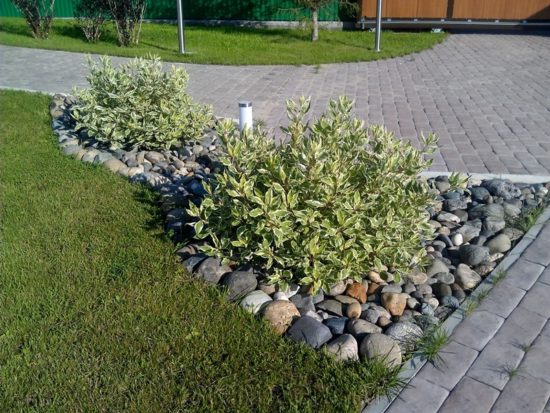
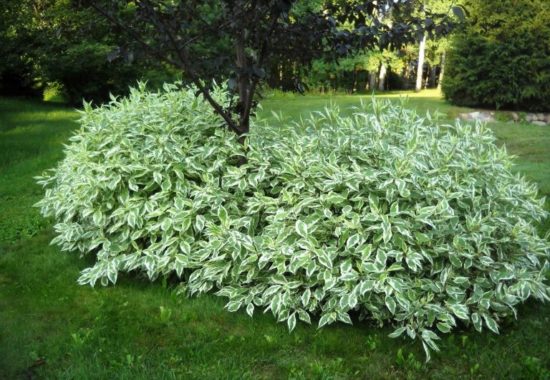
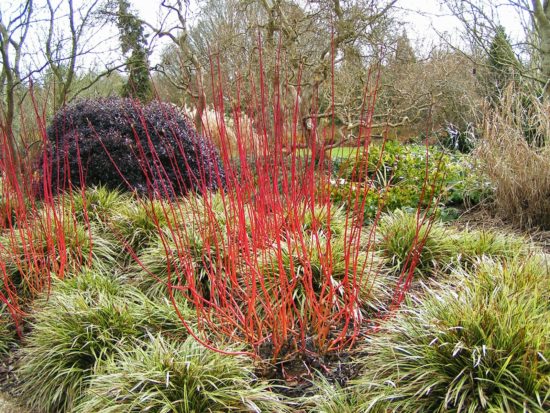
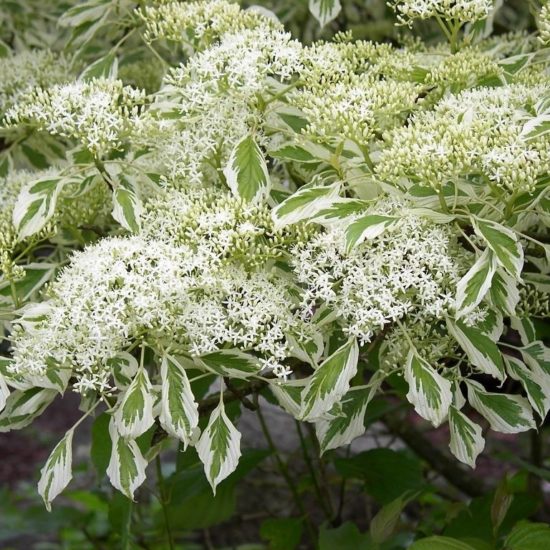
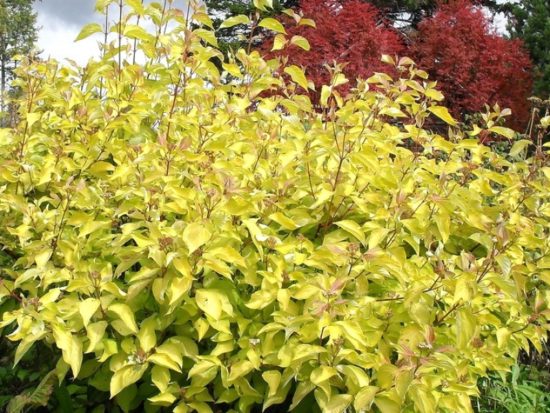
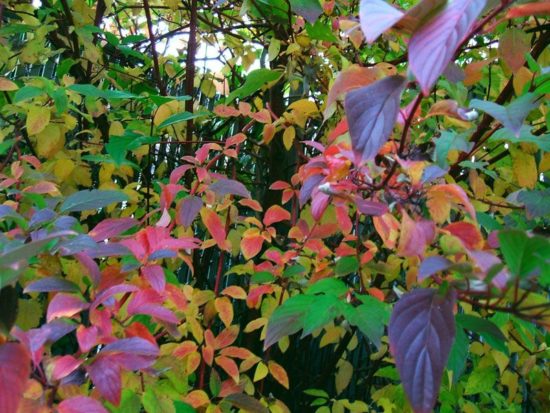
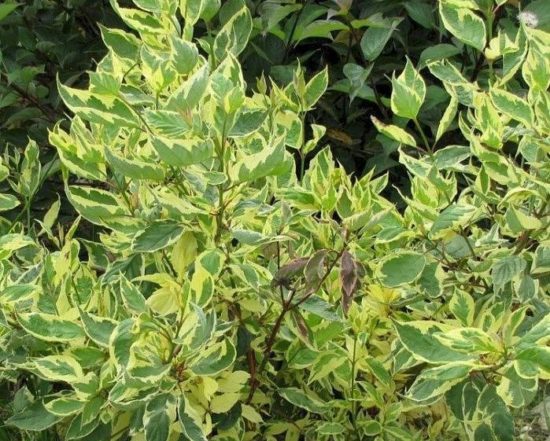
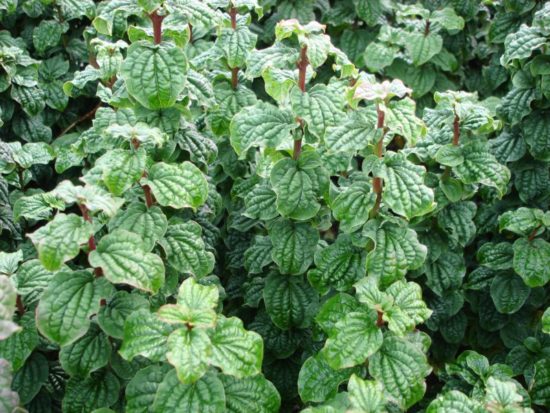

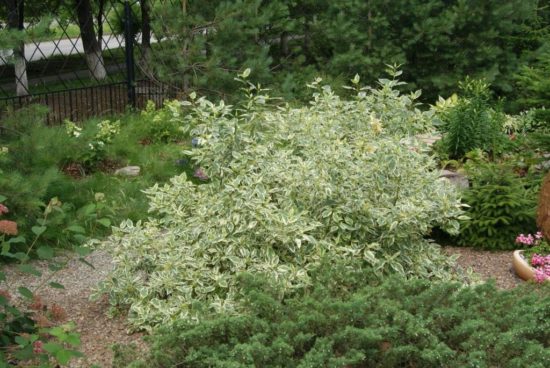
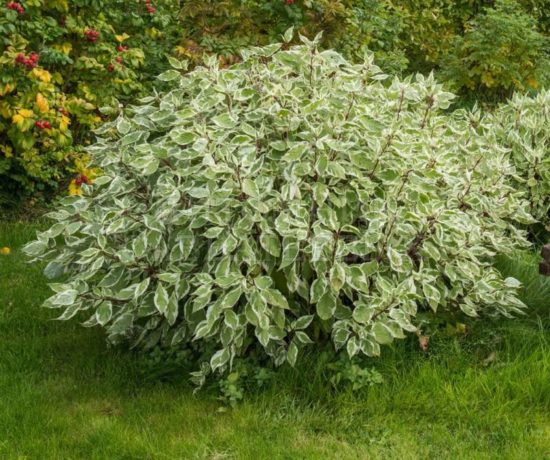
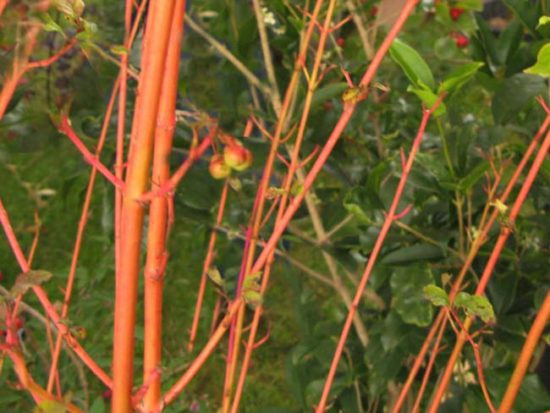
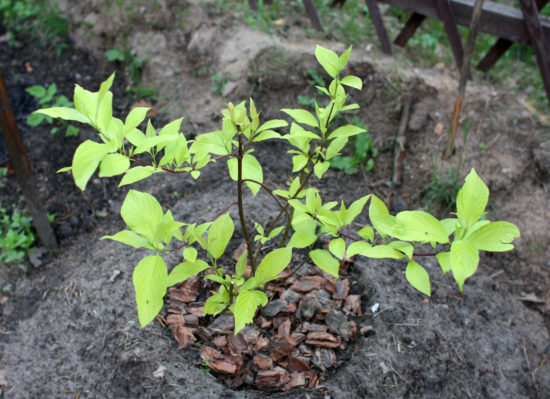
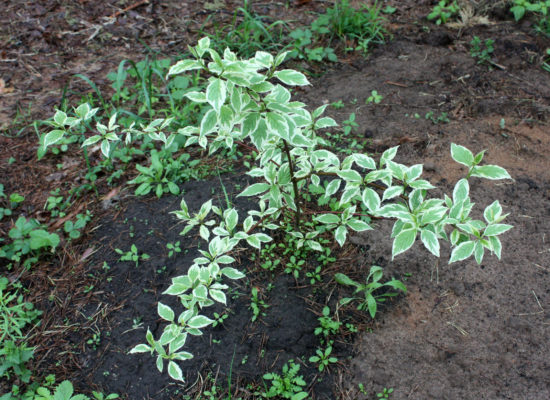
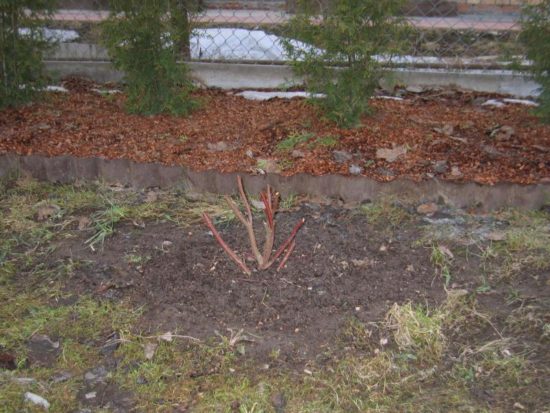
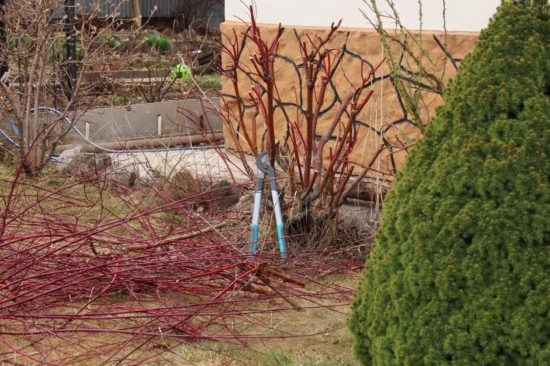
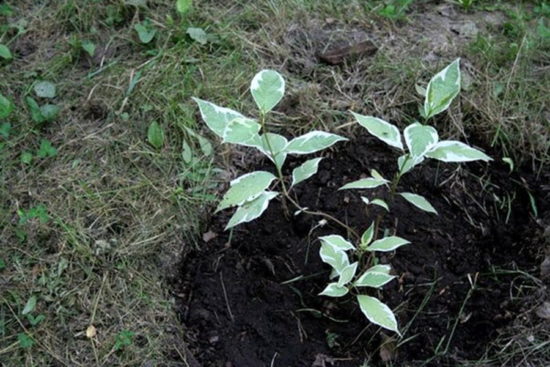
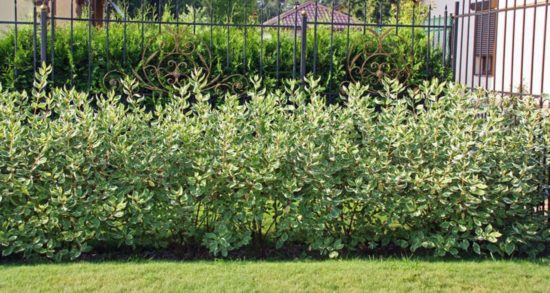
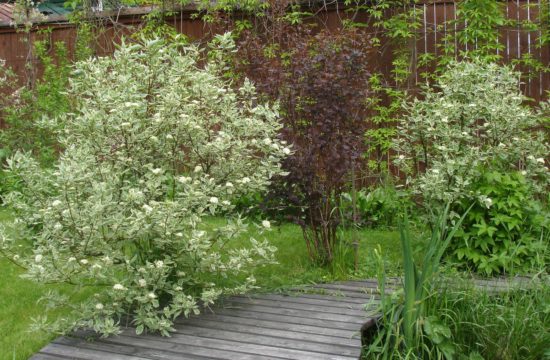
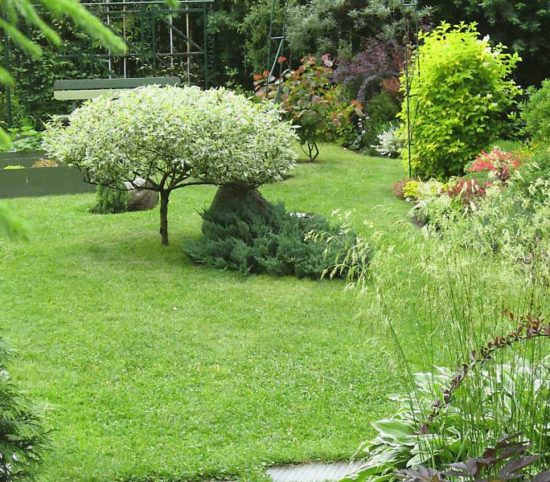

 CUCUMBERS NEVER GET SICK, I'VE BEEN USING ONLY THIS FOR 40 YEARS! I SHARE A SECRET WITH YOU, CUCUMBERS ARE LIKE THE PICTURE!
CUCUMBERS NEVER GET SICK, I'VE BEEN USING ONLY THIS FOR 40 YEARS! I SHARE A SECRET WITH YOU, CUCUMBERS ARE LIKE THE PICTURE! You can dig a bucket of potatoes from each bush. Do you think these are fairy tales? Watch the video
You can dig a bucket of potatoes from each bush. Do you think these are fairy tales? Watch the video
 How our fellow gardeners work in Korea. There is a lot to learn and just fun to watch.
How our fellow gardeners work in Korea. There is a lot to learn and just fun to watch. Eye trainer. The author claims that with daily viewing, vision is restored.They don't charge money for views.
Eye trainer. The author claims that with daily viewing, vision is restored.They don't charge money for views. A 3-ingredient cake recipe in 30 minutes is better than Napoleon. Simple and very tasty.
A 3-ingredient cake recipe in 30 minutes is better than Napoleon. Simple and very tasty. Therapeutic exercises for cervical osteochondrosis. A complete set of exercises.
Therapeutic exercises for cervical osteochondrosis. A complete set of exercises. Which indoor plants match your zodiac sign?
Which indoor plants match your zodiac sign? What about them? Excursion to German dachas.
What about them? Excursion to German dachas.
Planting white dogwood and caring for it do not require any special skills. White dogwood can be planted in early spring, before sap flows, or during leaf fall. For most gardeners, autumn planting is preferable, since with the onset of spring, overwintered seedlings immediately begin to grow. If you decide to plant white turf in the spring, try to preserve as much of the soil in which the seedling grew on its roots in order to protect the root system from stress during transplantation.
I have been growing 2 dera bushes for a long time - they are an excellent ornamental shrub, I recommend them to everyone. It is very beautiful both in winter and in summer, and there is practically no maintenance, only watering. I would like to add a little bit about pruning: only young shoots are bright and red, if you want the bush to be beautiful in winter, prune it further. With age, the shoots become grayish and lose their attractiveness.
Feeding white turf is desirable, but not necessary, especially if it grows in fertile soil. In order for the plant to have a healthy and blooming appearance, you can add 100-150 g of complex mineral fertilizer to each bush in the spring, and 5-7 kg of compost or humus in the summer.
Varietal plants are best propagated by quick and more productive vegetative methods. How to propagate white dogwood by cuttings? At the beginning of June, cut slightly woody cuttings with 7-9 buds from a strong, healthy bush and plant them in a container with suitable soil. Rooting is best done in a greenhouse. Caring for cuttings involves moistening the soil and fertilizing with organic and mineral fertilizers. By the beginning of autumn you will receive independent seedlings with a well-developed root system.